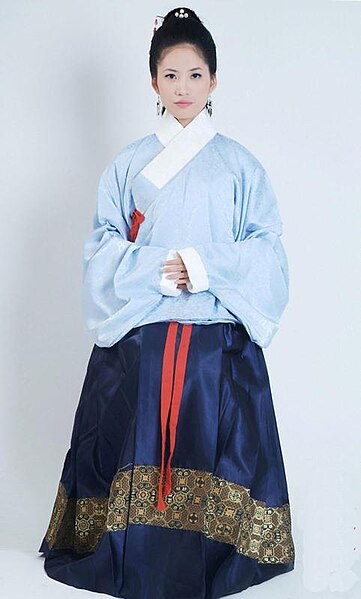Hanfu, are the traditional styles of clothing worn by the Han Chinese. There are several representative styles of hanfu, such as the ruqun, the aoqun, the beizi and the shenyi, and the shanku.
a section of The Night Revels of Han Xizai, painted in the 10th century.
Wanli Emperor in mianfu regalia
Ming Ruqun stored by the House of Confucius
A group of musicians in Qixiong; Five dynasties.
Ruqun is a set of attire in Hanfu which consists of a short jacket typically called ru worn under a long Chinese skirt called qun. However, when use as a general term, ruqun can broadly describe a set of attire which consists of a separated upper garment and a wrap-around lower skirt, or yichang, in which yi means the "upper garment" and the chang means the "lower garment". In a broad sense, ruqun can include the shanqun and aoqun in its definition.
A Chinese lady wearing an aoqun, a style of ruqun popular among Chinese women during the Ming dynasty and Qing dynasty.
A standing dignitary wearing yichang with a bixi, Shang dynasty.
Man wearing shanqun (or ruqun) featured in the bronze armed warrior holding up chime bells.
Pair of shamans or attendants, Chu culture, Warring States period, 4th-3rd century BC, Portland Art Museum, Oregon.








